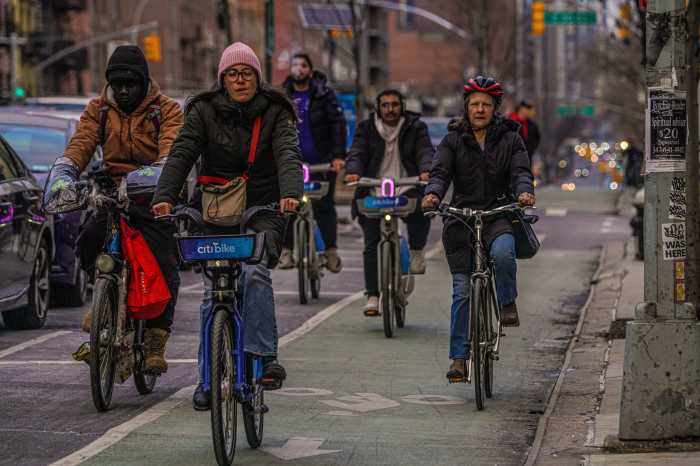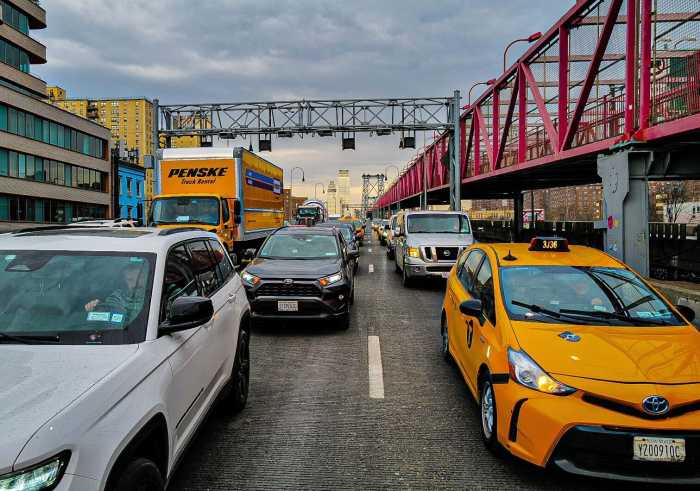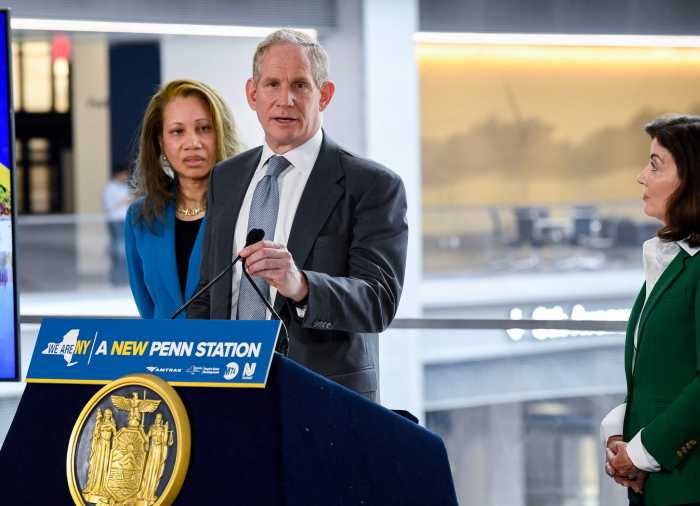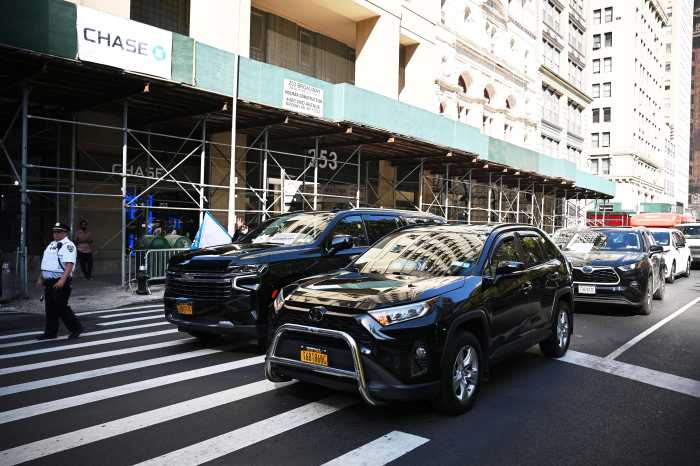
Andy Byford’s first public meeting as MTA transit chief Monday began with a gift offering: A subway map illustrating all stations inaccessible by wheelchair.
The framed map, delivered by advocates from Rise and Resist, placed blue pins on stations that are wheelchair accessible — about 23 percent of the network — and red pins on stations that are not.
The advocates heard that the United Kingdom native had a framed subway map in his office and hoped he would hang this map alongside it.
“We talked about printing the version of the subway map which only has accessible stations, but we figured that we’d give you a map that you could change, because we believe that this map can be changed,” said advocate Jessica Murray, representing the Elevator Action Group from Rise and Resist. “We recognize the expense and the challenge that the elevator situation presents, but within the ecosystem of New York City, elevators are really the only option to make the transit system accessible to everyone.”
It was the start of a lengthy, at times tumultuous meeting that touched on the MTA’s continued accessibility problems — one of Byford’s stated top priorities — as well as issues relating to Gov. Andrew Cuomo’s involvement in the MTA.
Those included the governor’s program to rehabilitate more than two dozen subway stations and a recent Daily News report that alleges that the MTA and the governor’s office fudged delay figures to place blame on Con Edison for failing subway service. (The governor on Sunday denied involvement.)
Byford, who now oversees subway, bus and paratransit service, announced in his opening statement that he will put together a “comprehensive, compelling” corporate plan in the coming months to address three workplace topics: people, processes and infrastructure. He hopes the plan will help reverse declining bus and subway service and notes he took a similar approach to his last gig as CEO of Toronto’s public transportation agency.
“It’s already apparent to me in just four days here … that what’s really required here is a complete top-to-bottom modernization of every aspect of what we do: our infrastructure, the processes that support what we do and the prevailing culture, in other words the way in which we go about our business,” Byford said.
“In my first week here I’ve met a lot of good people and that’s obviously very encouraging to me,” he added. “New York City Transit colleagues are as determined as I am to turn things around.”
Byford’s first showing impressed advocates and some of the most vocal members of the MTA board. Jon Orcutt, spokesman for the nonprofit TransitCenter, described Byford’s demeanor as being “completely different than the hangdog bureaucrat vibe that you get from everybody else at the MTA.”
“We thought it was like an alternative universe of MTA management,” Orcutt continued. “He wasn’t defiant and was really trying to answer board member questions … him taking ownership of the problems and saying that he wanted to work through them is so much different than what we’ve seen and really refreshing.”
MTA board member Veronica Vanterpool, who took time during the meeting, along with her colleagues, to criticize the MTA for prioritizing its pre-Byford program to renovate stations, known as the Enhanced Station Initiative, over service-related improvements, also gave the new NYC Transit head high marks.
“He was very thoughtful with his comments and showed that he listens not only to board members and staff, but also to the public,” she said. “… His perspective comes from a global expertise in transit and that is very useful right now.”



































